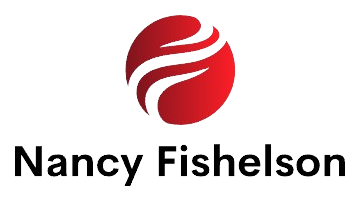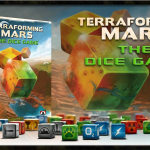Introduction
In the realm of printing, the choice of printing media plays a pivotal role in determining the quality, durability, and suitability of the final output. From traditional paper to specialized substrates, the diversity of printing media available today offers a wide array of options to cater to various printing needs and applications. Understanding the types of printing media is essential for achieving desired results in fields ranging from graphic design and advertising to photography and fine art.
We will explore the fundamental categories of printing media, highlighting their characteristics, uses, and significance in the world of printing and visual communication. Whether you’re a professional printer, graphic designer, photographer, or simply an enthusiast exploring the possibilities of print, delving into the realm of printing media opens up a realm of creative possibilities and technical considerations that shape the visual landscape around us.
Printing Media – Newspapers and Magazines:
Newspapers and magazines represent the cornerstone of print media, providing timely news, analysis, and entertainment to readers worldwide. Newspapers typically offer daily or weekly updates on current events, politics, culture, and more, catering to a broad audience base. Magazines, on the other hand, often focus on specific topics such as fashion, lifestyle, technology, or niche interests, appealing to targeted demographics.
Brochures and Flyers:
Brochures and flyers serve as versatile marketing tools, designed to promote products, services, events, or organizations. Printed on lightweight paper, they feature concise yet compelling content accompanied by eye-catching visuals. Brochures are commonly used by businesses to showcase their offerings in a detailed manner, while flyers are ideal for quick dissemination of information in high-traffic areas.
Posters and Banners:
Posters and banners command attention with their large size and bold designs, making them effective tools for advertising, announcements, or advocacy campaigns. Whether displayed indoors or outdoors, these printed materials convey messages to a wide audience, leveraging vibrant colors and captivating imagery to leave a lasting impression.
Direct Mail:
Direct mail remains a potent marketing strategy, allowing businesses to reach potential customers directly through printed materials delivered to their mailboxes. From postcards to letters, direct mail campaigns can be highly targeted, personalized, and measurable, offering a tangible touchpoint in a digital world.
Packaging:
Packaging serves a dual purpose of protecting products and conveying brand identity, with printed designs playing a crucial role in attracting consumers’ attention on crowded shelves. Whether it’s the intricate artwork on a cereal box or the sleek label on a luxury perfume bottle, printed packaging enhances the overall brand experience and influences purchasing decisions.
Books and Publications:
Books and publications encompass a vast spectrum of printed materials, ranging from novels and textbooks to academic journals and art books. Print-on-demand technology has revolutionized the publishing industry, allowing authors and publishers to produce high-quality books in small quantities, catering to niche markets and reducing inventory costs.

Signage and Billboards:
Signage and billboards are ubiquitous in urban landscapes, guiding pedestrians, motorists, and commuters while also serving as prominent advertising platforms. Whether it’s a storefront sign, a roadside billboard, or a digital display in a bustling city center, printed signage captivates audiences with its bold typography and compelling visuals.
Promotional Items:
From branded merchandise like t-shirts and mugs to promotional giveaways like pens and keychains, printed items serve as tangible reminders of brands, events, or causes. Whether distributed at trade shows, corporate events, or fundraising campaigns, these promotional materials reinforce brand recognition and foster customer loyalty.
Fine Art Prints:
Fine art prints allow artists to reproduce their original artworks with exceptional clarity and fidelity, making them accessible to a wider audience. Whether it’s a limited edition lithograph, a giclée print on canvas, or a digitally enhanced photograph, these prints preserve the beauty and integrity of the artist’s vision, enriching homes, galleries, and museums alike.
3D Printing Media:
While traditional printing involves ink on paper, 3D Printing Media adds a new dimension to the world of print media, enabling the creation of three-dimensional objects layer by layer. From prototypes and architectural models to custom jewelry and prosthetic limbs, 3D printing revolutionizes manufacturing, design, and innovation across various industries.
Textiles and Apparel Printing:
Textiles and apparel printing involve applying designs, patterns, or images onto fabric or garments, transforming them into wearable works of art. Techniques such as screen printing, digital printing, and sublimation allow for intricate designs and vibrant colors, making custom clothing, accessories, and home textiles a popular choice for personal expression and brand promotion.
Promotional Displays and Point-of-Sale Materials:
Promotional displays and point-of-sale materials are essential components of retail marketing, enticing shoppers and driving sales in brick-and-mortar stores. Whether it’s a cardboard standee showcasing a new product, a shelf talker highlighting a special offer, or a floor decal directing foot traffic, these printed materials create immersive shopping experiences and influence purchasing decisions at the point of sale.
Educational Materials:
Educational materials, including textbooks, workbooks, flashcards, and charts, play a vital role in facilitating learning and knowledge dissemination across various disciplines and age groups. Printed educational materials offer tangible resources for students, teachers, and lifelong learners, complementing digital platforms and enhancing comprehension, retention, and engagement.
Event Signage and Décor:
Event signage and décor set the stage for memorable experiences at conferences, trade shows, weddings, festivals, and other special occasions. From step and repeat banners featuring sponsor logos to themed decorations transforming venue spaces, printed signage and décor elements create immersive environments, reinforce event branding, and enhance guest engagement and photo opportunities.
Vehicle Graphics and Wraps:
Vehicle graphics and wraps turn ordinary vehicles into mobile billboards, promoting brands, products, or services on the go. Whether it’s a full-wrap covering the entire vehicle or vinyl decals applied strategically to fleet vehicles, printed vehicle graphics grab attention wherever they travel, maximizing brand visibility and generating impressions among diverse audiences.
Environmental Graphics and Wayfinding:
Environmental graphics and wayfinding signage guide people through public spaces such as airports, hospitals, museums, and campuses, enhancing navigation and user experience. Printed maps, directories, floor graphics, and directional signs provide clear visual cues, helping visitors orient themselves and navigate complex environments with ease and confidence.
Political Campaign Materials:
Political campaigns rely on printed materials such as yard signs, bumper stickers, buttons, and flyers to raise awareness, mobilize supporters, and convey key messages to voters. Printed campaign materials serve as tangible symbols of political allegiance, enabling candidates and parties to connect with constituents, spark conversations, and drive voter turnout during elections and grassroots advocacy efforts.
Architectural Graphics and Building Wraps:
Architectural graphics and building wraps transform architectural surfaces into dynamic canvases for artistic expression, advertising, or temporary branding. Whether it’s a mural covering the exterior of a building, window graphics showcasing product offerings, or interior wall murals enhancing the ambiance of a space, printed architectural graphics add visual interest and personality to built environments.
Pharmaceutical Packaging and Labels:
Pharmaceutical packaging and labels fulfill essential functions of product identification, safety, and regulatory compliance in the healthcare industry. Printed packaging materials, such as blister packs, bottle labels, and instruction inserts, provide critical information to patients, caregivers, and healthcare professionals, ensuring the safe and effective use of medications and healthcare products.

Security Printing and Anti-Counterfeiting:
Security printing and anti-counterfeiting technologies incorporate specialized printing techniques, inks, and substrates to protect valuable documents, currency, and products from fraud and forgery. From holographic foils and microtext to UV inks and tamper-evident features, printed security elements authenticate genuine items, deter counterfeiters, and safeguard brands, governments, and consumers against illicit activities.
Conclusion
Printing media encompasses a rich tapestry of formats, materials, and technologies, each contributing to the vibrant landscape of communication, marketing, and creativity. From the tactile experience of flipping through a magazine to the awe-inspiring sight of a larger-than-life billboard, print media continues to captivate and inspire audiences in a digital age. As technology evolves and consumer preferences shift, the role of printing media may continue to evolve, but its enduring power to inform, persuade, and engage will remain timeless.










